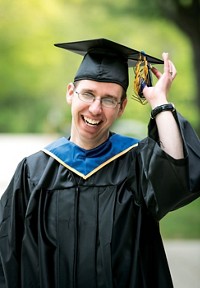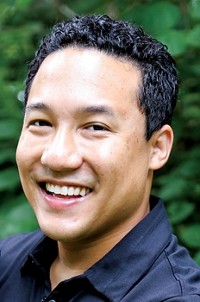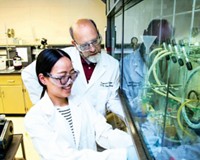Advertisement
Grab your lab coat. Let's get started
Welcome!
Welcome!
Create an account below to get 6 C&EN articles per month, receive newsletters and more - all free.
It seems this is your first time logging in online. Please enter the following information to continue.
As an ACS member you automatically get access to this site. All we need is few more details to create your reading experience.
Not you? Sign in with a different account.
Not you? Sign in with a different account.
ERROR 1
ERROR 1
ERROR 2
ERROR 2
ERROR 2
ERROR 2
ERROR 2
Password and Confirm password must match.
If you have an ACS member number, please enter it here so we can link this account to your membership. (optional)
ERROR 2
ACS values your privacy. By submitting your information, you are gaining access to C&EN and subscribing to our weekly newsletter. We use the information you provide to make your reading experience better, and we will never sell your data to third party members.
Education
Newscripts
Puppy Protective Equipment, Retrosynthetic Rummy
by Mitch Garcia
January 19, 2015
| A version of this story appeared in
Volume 93, Issue 3

A dog dressed in red booties and swimming goggles has been getting some quizzical glances at the University of Colorado, Denver. But personal protective equipment (PPE) isn’t just for humans. Undergraduate student Stephanie Akright learned this firsthand this past semester when an Iraq War veteran signed up for the laboratory Akright was teaching at the school.
Before the semester began, Akright says, she had concerns about keeping the student’s service dog safe. But after running through the procedures with Catherine Rathbun, the laboratory safety coordinator, and witnessing how well protected the dog would be from chemicals, her uneasiness decreased. By the end of the semester, Akright says, “the dog’s training made her better behaved than some of my students.”
Rathbun tells Newscripts her main safety consideration was making sure the dog was not exposed to chemicals. Thus, Rathbun required that the dog wear booties and goggles and stay on a mat while in lab. Beyond PPE considerations, Akright describes other precautions that were implemented to ensure the animal’s safety: “We wanted quick access to the exit for both the animal and the student and placed the mat in a low traffic area of the lab, which was also in close proximity to a safety shower and the student’s bench.”
As far as how other students interacted with the service animal, Akright says, “The students were respectful of the service animal’s boundaries and did not come up and pet the dog while she was on duty.”
PPE-clad pooches could be coming to a teaching laboratory near you. Sheila Kennedy, a safety coordinator at the University of California, San Diego, points out that the Americans with Disabilities Act requires universities to make reasonable accommodations for service animals. Kennedy says they have not yet needed to make such accommodations in the chemistry and biochemistry department’s teaching labs at UCSD, but it is something they have given a great deal of thought. Following her experience, Akright says, “I have hopes that more students who need service animals won’t skip lab classes just because they have a dog accompanying them.”
Jeffrey M. Carney is always trying new ways to share the excitement he gets from chemistry with his students. An assistant chemistry professor at Christopher Newport University, in Newport News, Va., Carney created a chemical card game, Retrosynthetic Rummy, to get his students excited about studying organic chemistry (J. Chem. Educ. 2014, DOI: 10.1021/ed500657u).

The game’s mechanics work similarly to the classic card game gin rummy. But instead of suits (e.g., hearts and diamonds), he uses different target molecules. A winning hand could involve a combination of obtaining a straight (i.e., cards representing consecutive steps in the synthesis) or obtaining cards with similar functional groups (e.g., four-of-a-kind of alcohols or alkyl halides).
Carney describes himself as a competitive person, and it was the desire to create something at the intersection of learning and competition that inspired him to develop the game. To his surprise, he also found that his students have a competitive streak too. “I even heard some creative chemistry trash talking during the game,” he says. “Once they understood the objective, they really got into it.” The feedback Carney received from his students was very positive, and he mentions that “some students would come to borrow the cards when they had downtime during the week.”
Mitch Garcia wrote this week’s column. Please send comments and suggestions to newscripts@acs.org.





Join the conversation
Contact the reporter
Submit a Letter to the Editor for publication
Engage with us on Twitter